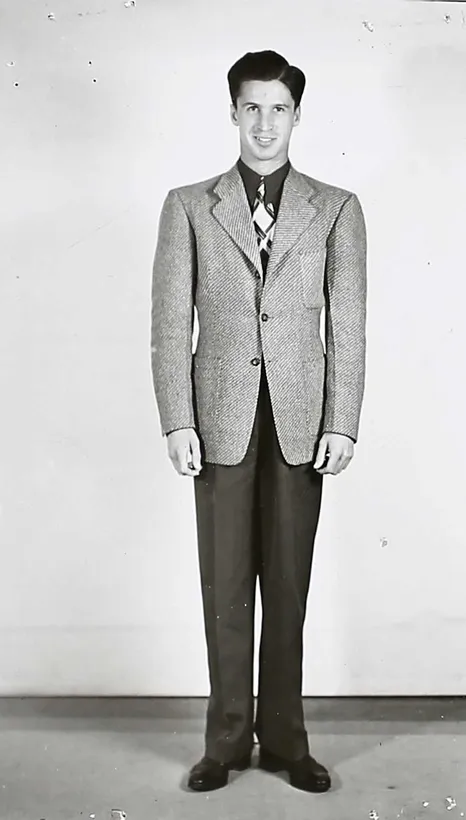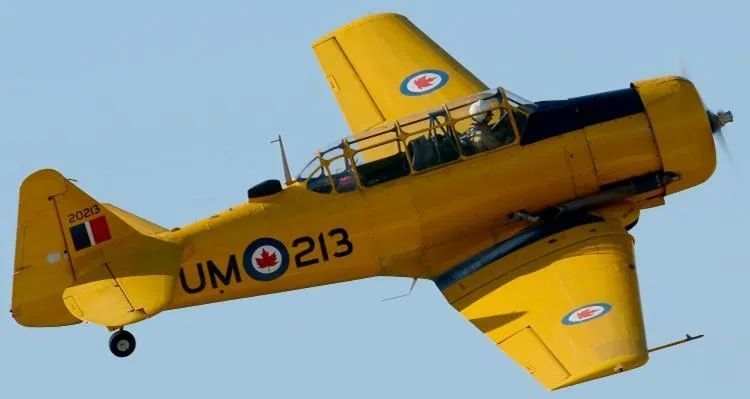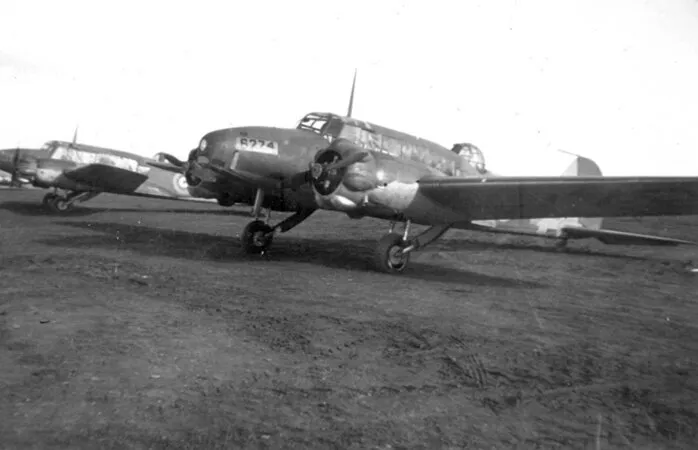Armstrong, Kenneth Maescher (Pilot Officer)
Killed in Flying Accident 1941-April-08


Birth Date: 1916-November-27
Born: Los Angeles, California
Parents: Son of Earnest K. and Axcie G. Armstrong, of Los Angeles.
Spouse:
Home: Los Angeles, California, USA
Enlistment:
Enlistment Date: 1941-February-05
Service
RCAF
Unit
31 BGS- Bombing & Gunnery School (RAF)
Base
RCAF Stn. Picton, Ontario
Rank
Pilot Officer
Position
Pilot
Service Numbers
C/4009
Crew or Other Personnel
Harvard 2712
Harvard serial: 2712

Canadian Warplane Heritage Museum
The North American Harvard appeared in 1937, in response to a US Air Corps proposal for an advanced trainer. The first of 50 Harvard Mk. Is ordered by the Canadian Government were delivered to RCAF Sea Island, BC in July 1939. By early 1940, the Mk. II was being assembled in California with an all metal fuselage replacing the original tube and fabric structure. 1200 Mk. IIs were supplied from US sources, until Canadian built Harvards started being produced in 1941.
In August 1938, Noorduyn Aviation of Montreal farsightedly signed an agreement with North American, to build the Harvard under licence. When the British Commonwealth Air Training Plan (BCATP) came into being in December 1939, Noorduyn received its first orders and went on to produce nearly 2800 Harvard Mk. IIBs for the RCAF and the RAF, between 1940 and 1945. In Canada, Harvard Mk. IIBs were used as advanced trainers with the BCATP at fifteen Service Flying Training Schools across the nation. They helped pilots make to the transition from low powered primary trainers, like Fleet Finch or the de Havilland Tiger Moth, to high performance front line fighters such as the Spitfire.
At the end of WW II, although the RCAF retained the Harvard as a trainer, a large number of them were sold off to civilian operators. The RCAF soon regretted this, for by 1949 the Cold War with the Soviet Union was in full swing and the RCAF urgently needed trainers again. 100 T-6J Texans were leased temporarily from the USAF and a further 270 Harvards, the Mk. IV version, were ordered from Canadian Car & Foundry, Thunder Bay. The RCAF used the Harvard Mk. IV for a further fifteen years, before finally retiring it in 1966.
A total of 20,110 Harvards were built between 1938 and 1954, 3,370 of them in Canada. Countless numbers of privately owned Harvards are still flying today.
Canadian Warplane Heritage Museum's Harvard Mk. IV was built by Canadian Car & Foundry, Thunder Bay, Ontario in late 1951. The aircraft saw service at four RCAF flying schools across the nation until it was sold to a civilian owner in 1965. It was the third aircraft to join the Museum after Dennis Bradley, Alan Ness and John Weir donated it in 1973. Canadian Warplane Heritage Museum
Aircraft Images
Harvard 2712
Harvard Mk.II 2712
Category A damage on 8 April 1941 at Athol Bay, Ontario (8 miles south-east of Picton). With Conversion Training Squadron at Picton, Ontario at that time. Pilot Officer K.M. Armstrong, an American in the RCAF, killed. Had 332:25 airframe time when struck off.1940-12-12 Taken on Strength 2019-08-20
1941-April-08 Accident: Conversion Training Squadron PICTON, ONT Loc: Aerodrome Names: Armstrong | Battaglia
1941-05-20 Struck off Strength 2019-08-20
Unit Desciption
31 BGS (31 Bombing and Gunnery School)
The Bombing and Gunnery School (B&GS) offered instruction in the techniques of bomb aiming and aerial machine gunnery to Air Observers, Bomb Aimers, and Wireless Air Gunners. These schools required large areas to accommodate their bombing and gunnery ranges, and were often located near water. The Avro Anson, Fairey Battle, Bristol Bolingbroke, and Westland Lysander were the standard aircraft used at B&GS schools.

